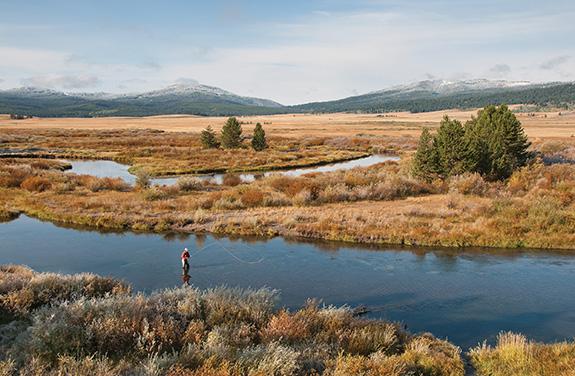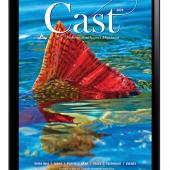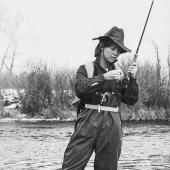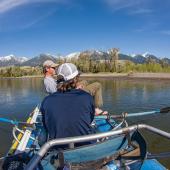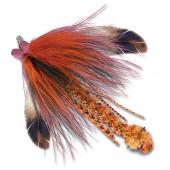Capricious Catch
Considerations for fall fly fishing.
Strip… strip… strip… BOOM! The water explodes in a fury of brown trout. The following three seconds are utter chaos as both sides battle to gain control. Alas, the hook never set and the fish is liberated from the tether of the line. Despair sets in as the brown you’ve worked for all week slowly slinks back to the depths, never to be seen again.
Capricious describes someone or something given to sudden and unaccountable changes in mood or behavior—which also describes fly fishing the fall in Montana. Whether it’s the sudden weather swings from 70 degrees and sunny to 15 degrees and dumping snow, or the instant change from excitement to despair as a big fish gets away, fall is always a wildcard.
With so much uncertainty, one must do everything one can to control the things that are able to be controlled. The best way to maximize control is to carry the proper gear and apparel when fishing.
With weather ranging anywhere from zero degrees to 80 degrees on any given fall day, proper apparel is essential. There are four layers one should not leave home without: a baselayer, a fleece layer, a nano-puff or down jacket, and a waterproof shell. For a baselayer, look for something that will hold in heat during cold periods and let out heat during the warm parts of a day. Patagonia’s R1 hoody is a fabulous option for this layer. Next, look for mid-layers that continue to insulate when wet, just in case you take a swim. Fleece is awesome for this, as is synthetic down. To top off the layering system, bring a good raincoat or wading jacket.
Fall is also the time to break out the waders again. Under those waders, employ a similar layering system. Long underwear, fleece or nano-puff pants, and a good pair of wool socks should be in your fall-fishing arsenal. As the weather conditions fluctuate, take off or add layers as necessary.
As far as equipment goes, there are only two things that one really needs to consider. The first is a waterproof backpack. This allows one to store clothing, fishing gear, and a few of the “just in case” essentials such as matches and drinking water. The second is a stout rod and strong line. Big fish move in the fall. Make sure the rod, leader, and tippet material you choose match the fish you’re after.
Jake Walbridge is the general manager of Montana Troutfitters in Bozeman.


